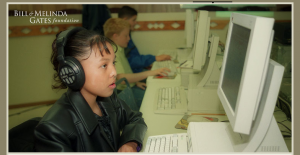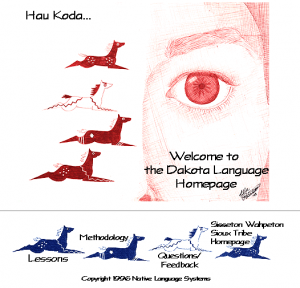Unrepentant , produced in 2008, stresses that the issue of racism and prejudice against First Nations people continues today. While researching infomation regarding my local school system I came across this sobering video regarding residential schools, in particular in Port Alberni but also other areas. It follows the story of a United Church minister, Kevin Annett who chooses to expose the tragedies of the local residential school. He is removed from the church and his family is destroyed all in an attempt to silence him. It is the continuing sage of injustice regarding the schools. This was happening in the face of many lawsuits being filed regarding abuse in residential schools. It’s striking that so many people barely survived school, many of whom are the parents and grandparents of the students in my school district. It is certainly critical that teachers organize the classroom with this in mind. To my mind, school is not supposed to be about survivial. It’s supposed to about learning and sharing and growth. It also strikes me that this is part of the deep-reflection on my own culture and even though I didn’t move here until 1998, I may represent that culture, because I’m a non-aboriginal teacher. The critical point for me is that this happened recently and is ongoing and it is part of the key to student engagement. Annett continues to write on the subject in an attempt to tell the truth in spite of ongoing attempts to discredit him.
Category Archives: Module 4
Bill & Melinda Gates Foundation: Native American Access To Technology Program
The Bill and Melinda Gates Foundation is the largest privately funded foundation in the world. The primary aims of the foundation are, globally, to enhance healthcare and reduce extreme poverty, and in America, to expand educational opportunities and access to information technology. (wikipedia) One of the programs run by the foundation is called the “Native American Access to Technology Program”. I came across this program during my search for material on the digital divide and its impact on indigenous communities.
Providing access to technology has more than logistical complications. There are also philosophical issues which go hand-in-hand with this discussion. Some of the more salient points embedded in this issue are outlined in a paper by Dorr, Gordon & Gordon, found here: http://www.gatesfoundation.org/learning/Documents/NAATP.pdf The authors assert that it would be naive to conclude that simply overcoming connectivity issues change the fundamental economic plight of indigenous peoples in America. Underlying economic, social, and political realities that led to the lack of infrastructure also hobbled better solutions to the problems of technology access for Native Americans, and those realities are still with us.
Some details on the Bill and Melinda Gates Foundation, as well as the Native American Access to Technology Program can be found online here: http://www.gatesfoundation.org/nr/public/media/annualreports/annualreport04/programs/libraries/grantee.html
The Dakota Language
Dakota is a regional language spoken by the Sioux people. Wikipedia identifies it as being closely related to and mutually intelligible with the Lakota language. In doing my research on the digital divide and language preservation, I came across an old website (hasn’t been updated in years) that was attempting to preserve Dakota online. I think its really interesting to examine websites such as this as they provide an almost historical perspective on what digital representation and preservation of indigenous language looked liked only 15 years ago. 1996 appears to be the last year the page was updated, however it seems to still have some value in language acquisition. Check it out!: http://www.alliance2k.org/daklang/dakota9463.htm
Using Technology to Preserve Native American Languages
http://www.research.vt.edu/resmag/sc98/lockee.html
This article discusses the ideas of Barbara Lockee of Virgina Tech. Lockee did her doctoral dissertation on using hypermedia to perpetuate Native American languages. Although a small percentage of Native American people are fluent in a native language, Lockee suggests that there is hope because many elders believe that maintenance of tribal cultures is dependent on young people’s learning to read, write, and speak their native languages. As part of her dissertation work, Lockee is developing a program to help teach Native Americans their original languages.
Lockee mentions the reasons for why Native Americans lost their languages. Influences such as residential school and moving to reservations heavily affected preservation of native languages. With the lack of ability to communicate to elders, native peoples have a hard time learning about the their culture and heritage.
Lockee discusses how non-urban Native Americans have different learning styles that they have acquired at home. This is something important to consider when implementing language programs with Native students. These progams also need to be relevent and involve the context of actual situations.
The progam that Lockee is creating provides an opportunity for the students to translate and even write their own stories at their own pace. It also promotes critical thinking skills instead of memorization of content. The students would also be allowed to work in pairs to encourage cooperative, inter-related type learning that suits their cultural styles. Although her program is created for the Cherokee language, different tribes can adapt the program by inserting their own legends and languages into the template.
I find this document to be very encouraging as I understand that many Aboriginal peoples in Canada are also concerned with the loss of their language and heritage. Because there are so many different tribes and languages involved, it would be challenging to find or create a program similar to that of Lockee’s to possibly accommodate native language revival in Canada. With the available technology today, it seems quite possible. However, there is a time limit as elders only get older and will no longer be available to aid in the language revival process.
NorthWest Indian News (NWIN)
http://www.nwin.tv/NWIN-Welcome.html
Northwest Indian New appears to be a very interesting website where one can access issues and events important to Indian people. The website claims to be a positive voice for Indian people and is currently being broadcasted into more than 50 million households throughout Canada and the United States. There are also plans to share NWIN programs with European and Asian audiences in the future. NWIN provides training and employment for tribal members in a non-traditional industry.
There is a section where one can access to watch all the episodes of NWIN. The latest episode available is number 44 from November, 2010. I am interested in searching for more current episodes but I am unsure of when they would be posted if at all. I watched a few of the most recent episodes and they are presented by a Tulalip Tribal member named Carissa Ramsey. She covered topics such as fisheries, the 2010 Olympics in Vancouver, events at local schools, The American Indian Film Festival, and Native art. There are several other reporters besides Ramsey. They use various locations to report news.
I am glad to see that all the reporters are of Aboriginal decent and are from tribes. I also looked at the credits section of the website and noticed that almost all individuals involved with NWIN are Aboriginal and their bands and tribes are also mentioned. This seems like a reliable website for Aboriginal peoples to acquire information of the latest news that affects Native people.
Native America Calling
Native America Calling (NAC) is a radio talk-show connecting traditional and internet radio stations and listeners in dialogue about Indigenous issues. Boasting an audience of approximately half a million listeners throughout Canada and the United States, each episode features experts and guests with callers with a stated goal of improving the lived reality of Native Americans.
The one-hour program airs live, five days a week, from 10-11 a.m. PST (or, 1-2 pm EST). You can listen to the program streaming online, or you can tune-in on your radio if you are in range. If you want to call in, the number is 1-800-99-NATIV. New topics are posted at the beginning of each week and you can also sign up to their mailing list to have topics delivered to you. You can also listen to the archive of past topics, ranging back over a decade, although the program hasn’t always been 5 days per week. The program is produced in Anchorage, Alaska, by the native owned/operated Koahnic Broadcast Corporation.
First Nations Control of First Nations Education (2010 doc)
First Nations Control of First Nations Education was released last summer by the Assembly of First Nations and chiefs from across Canada. Much like the documents released in 1972 and 2005, this document is intended to be used by Aboriginal leaders, bands, local school boards, and the Provincial and Federal governments as a comprehensive plan to address the critical education needs of Aboriginal students Canada wide – yet unmet since the publication of the last two documents.
It, like the other documents, outlines key areas to be addressed:
1. Access for all life-long learners to be taught and to learn in their first language,in curriculum which is grounded in Aboriginal beliefs, values and traditions.
2. Access to diverse educational programs over the continuum.
3. First Nations control of their education with the support of local, federal governments.
Module 4- Aboriginal youth and health careers
This video could be used within the classroom in relation to career options for youth. It provides vignettes and actual interviews of people from various aboriginal communities who currently work within the health care system. In doing so, the video also provides youth information on courses needed at the high school level and how one would go about attaining the necessary skills. A great deal of the focus is on attaining good skills within the math and science subjects.
Health Careers – Industry in the Classroom Series from First Nation Help Desk on Vimeo.

